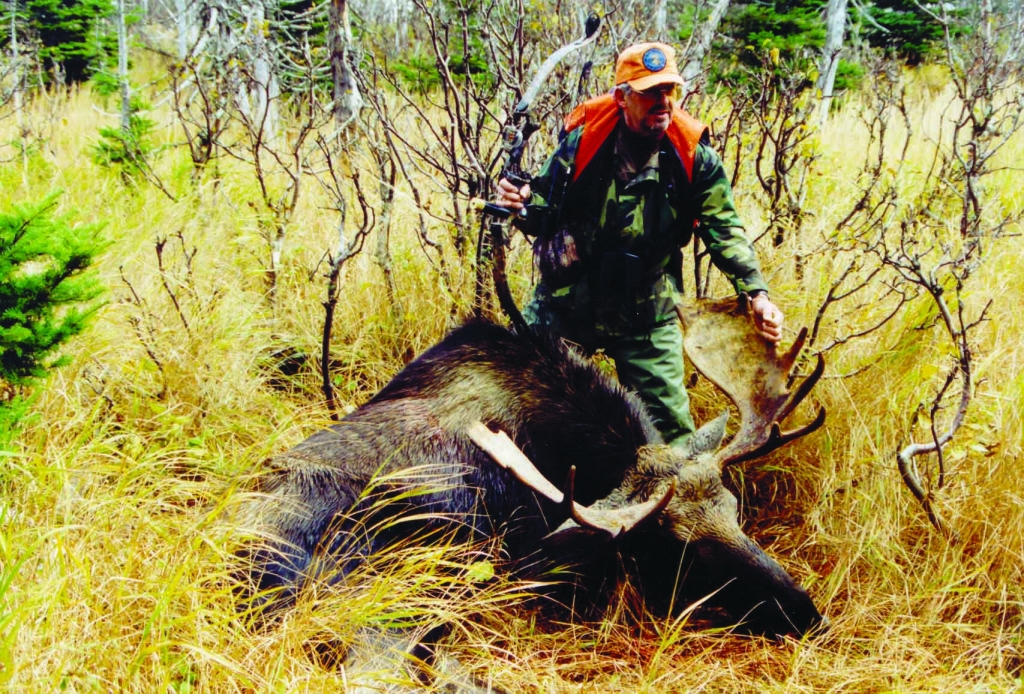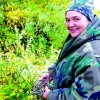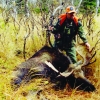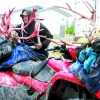Bowhunting for wild game such as moose is a great sport, but the new bowhunter must take on some challenges when preparing for his/her first bow hunt for big game animals. Let’s look at a few of these challenges; the first one is obvious.
Challenge One: The new bowhunter must first become proficient at shooting the bow and arrow. Learning how to shoot the bow and arrow can be fun, but you must first get the equipment that is right for you, and then practice a good deal to become proficient! Former gun hunters may find it easier and more comfortable to first try bowhunting using a crossbow; the transition is easier.
Challenge Two: Bowhunting equipment is specific to the hunter, and bowhunters must select bowhunting equipment very carefully and make sure it is tuned properly for hunting.
Choosing The Right Equipment For You. Unlike with rifles, where thousands of people can safely and comfortably shoot with the same rifle, bowhunting equipment is very specific to, and will be limited by, the strength and size of the individual shooter. A shooter’s strength will determine the draw weight he or she can handle; and, a shooter’s size, particularly arm length, will determine the draw length that is suitable for that shooter.
Arrows must then be carefully matched to the bow in terms of arrow length and arrow spine. To hunt big game animals the arrow must then be tipped with suitable broadheads. You have to make wise choices, and getting professional advice from a pro shop is the best way to go when selecting equipment.
Challenge Three: The bowhunter going after big game animals has to build up the personal strength needed to pull back heavier draw-weight bows to develop sufficient power to hunt big game animals.
The power that drives an arrow forward actually comes from the muscle power of the shooter; pulling the bow back transfers this muscle power via the bow string to the limbs of the bow as stored energy. When the bowhunter releases the arrow this energy is transferred, again by the bow string, to the arrow sending it on its way to the target. Bow hunters are limited by their own strength as to the power that can be developed.
Challenge Four: The bowhunter must develop an understanding of the differences between how bullets and broadhead-tipped arrows kill.
The Rifle and How a Bullet Kills: The rifle is a mechanical device designed to accurately send a bullet on its way to a target selected by the shooter. It is the bullet from the rifle that actually does the killing; the rest of the cartridge stays behind in the rifle until ejected.
Bullets are designed to reach the vital areas and kill by quick massive tissue and bone damage and loss of blood creating instant shock. Sometimes the massive kinetic energy of the bullet can knock the animal down immediately, and many big-game animals are harvested each year in this fashion.
The Bow and How a Broadhead-Tipped Arrow Kills: The bow is also a mechanical device, but designed to accurately send an arrow on its way to a target selected by the shooter. It is the broadhead that actually does the killing; the rest of the arrow simply acts as a delivery system to get the broadhead to its target.
Broadheads kill by cutting! The arrow has only a small fraction of the kinetic energy of a large caliber bullet. Arrows can’t smash through bones and deliver the massive, instant shock to an animal like bullets can. Instead, the broadhead-tipped arrow is designed to penetrate and kill an animal by cutting; and it must be razor sharp to do both jobs.
The broadhead can kill in two ways. First, it can slice through a vital organ of the animal such as the heart or lungs quickly stopping the function of that organ, resulting in a very quick death.
Second, it can slice through a part of the body rich in blood vessels such as one lung, the liver, or some other part of the body such as large muscles containing arteries or veins; this also causes heavy bleeding (hemorrhage) that leads to the animal passing out and dying – but this takes longer. In both cases blood pressure drops, cutting off oxygen to brain causing death, a process called hemorrhagic shock.
Challenge Five: To place an arrow properly it is especially important for bowhunters to develop a thorough knowledge of anatomy and shot placement for the animal hunted.
Heavier bones can stop arrows! To hit the vital organs the bowhunter has to avoid heavier bones and place the arrow so that it reaches the vitals. The bowhunter must know exactly where the major organs and blood vessels are, where the major bone structures are, and where to aim to avoid larger bones while still delivering the arrow to the vitals of the animal.
Many shots for the gun hunter are simply no-shot situations for the bow hunter.
Conclusions
There is nothing magical about bowhunting; but it is different from gun hunting, with a few new challenges thrown in. Most hunters, if prepared to learn and practice, can become very competent bowhunters, and have a lot of fun while doing so.
Next month, in ‘Part Two’ of this two-part series, we will develop a further understanding of why bowhunting is very much a short-range sport, and why many shots for the gun hunter are no-shot situations for the bowhunter.
Alex Gouthro is an avid bowhunter and is a master instructor in the International/Ontario Bowhunter Education Program. He is also the author of the Gouthro’s Moose Madness Series On Moose Hunting and Calling.
Readers are invited visit the author’s web site www.gouthrosmoosemadness.com and/or to contact the author at agouthro@tbaytel.net
I am the product, evolution of many thousands of years as are you.













I am the product, evolution of many thousands of years as are you. I grew up on the land in the remote far north of Ontario following in the footsteps of my...
One of the most beautiful serene places I’ve ever visited was on the banks of the Opinagau River in northern Ontario, just near the corner of land where...